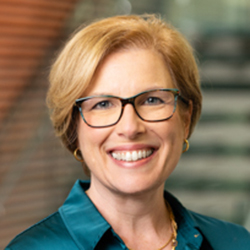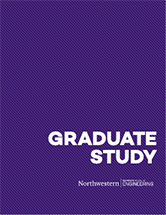Faculty Spotlight: Professor Jill Wilson
The Charles Deering McCormick Distinguished Professor of Instruction talks about her teaching style and what she enjoys about the Master of Engineering Management (MEM) program.
In 2018, Professor Jill Wilson received the Charles Deering McCormick Distinguished Professor of Instruction award, one of the highest honors awarded to faculty at Northwestern University.
 Wilson teaches Decision Tools for Managers in the Master of Engineering Management (MEM) program, and she also serves as a professor of instruction in the Department of Industrial Engineering and Management Sciences. She was recognized in large part for her ability to make content relatable for students and to help them feel comfortable in the classroom. As one student said after Wilson was honored, “I cannot stress enough how wonderful it is to have a mentor like Dr. Wilson. When someone you respect deeply believes in you, it makes up for a lack of belief in yourself, and no goal seems out of reach.”
Wilson teaches Decision Tools for Managers in the Master of Engineering Management (MEM) program, and she also serves as a professor of instruction in the Department of Industrial Engineering and Management Sciences. She was recognized in large part for her ability to make content relatable for students and to help them feel comfortable in the classroom. As one student said after Wilson was honored, “I cannot stress enough how wonderful it is to have a mentor like Dr. Wilson. When someone you respect deeply believes in you, it makes up for a lack of belief in yourself, and no goal seems out of reach.”
Wilson took a few minutes to talk about her teaching style, her goals as a professor and what she enjoys most about the MEM program.
How do you describe your background and expertise?
I did my graduate studies at the intersection of mathematics, computer science, and optimization. During my academic career, I have taught everything from introductory statistics to PhD-level optimization, with the bulk of my experience in teaching optimization to undergraduates and master’s students. I have some papers published in combinatorial optimization, but my real passion is in exploring how students learn and apply modeling techniques to real-world situations. I’ve been teaching spreadsheet modeling yearly for about 15 years.
What are your goals as a professor?
My goals are to help each student reach their highest potential. That means helping each student discover their own calling and helping them achieve the most they can. MEM 407 is a difficult quantitative course. Some students can do the quantitative work but struggle with the intuition, others get the intuition but struggle with the quantitative work, and of course, some students are great at both. My goal is to bring out the gifts of each learner and use those in collaboration to help everyone grow.
What do you enjoy most about being involved with the MEM program?
Hands down the students! They bring so many different kinds of experiences and perspectives, and they constantly challenge me to explain things better and to bring out more clearly the applications of the material they’re learning. Also, they’re kind, considerate, and fun!
How would you describe the goal of your Decision Tools for Managers course?
First of all, I want to make future managers aware of the quantitative models that can support good decision making. I’m not trying to make them into experts in any of these techniques, but rather I want them to have enough experience with the models to know what they can and can’t do and to be able to discuss them intelligently with analysts they may someday supervise. The curriculum requires that we cover a number of modeling and analysis techniques, so the course moves pretty quickly and requires a lot of practice outside the classroom. I also aim to make sure that students have the appropriate rigorous background that will prepare them well for MEM courses that are more quantitative.
When you received the Distinguished Professor of Instruction award last year, you said that learning stems from students being interested in the subject and being able to directly engage with the material. How do you make that possible in your MEM course?
I do my best to help students see how the material can be applied in real-world settings and show them the power of quantitative decision models. I’ve also worked to develop the course in a hybrid online-classroom format so that students can work through and engage the material at their own pace, and at times that work best for them. The online content includes instructional video modules interspersed with thought exercises to encourage students to engage actively with the material, rather than simply be passive listeners. We then spend our face-to-face time in the classroom collaborating and working through more challenging examples, where I can be on hand to support them through the more difficult concepts.

